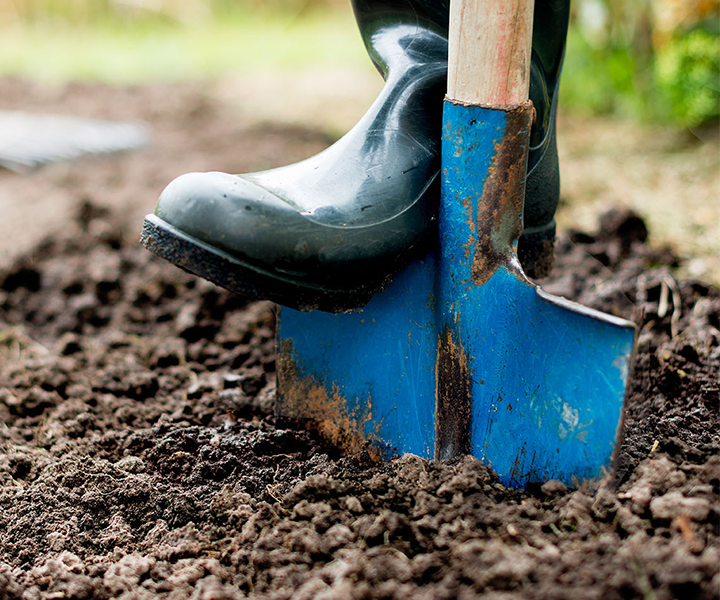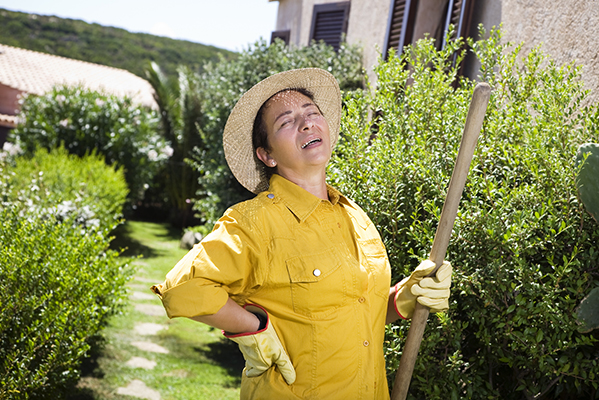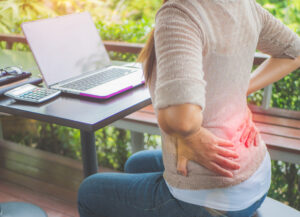It’s that time of the year when a lot of us will be enjoying time in our gardens – the grey doldrums of winter are a distant memory, and as we enter July, the garden is seemingly exploding into a celebration of color and form. However, this transformation doesn’t happen by itself; instead, we gardeners are instrumental in creating and maintaining the green space we find solace in.
Believe it or not, gardening is not always the idyllic pastime it often presents itself as. While one may gaze in awe at a magnificent summer boarder, they don’t see the pulled backs, dodgy knees or cranky necks that made it so. In fact, the Royal Society For The Prevention Of Accidents reports that 300,000 people in the UK attend hospital each year following gardening accidents (bear in mind, this number doesn’t include the number of people who have aches and pains from gardening, but do not require hospital treatment).
So, the chances are that the poor old gardener may have some aches and pains from time to time, indeed caused by our favorite hobby. However, did you know that a lot of common gardening injuries can be prevented by following a few simple tips? Below are some hints and tips for specific garden activities, written by registered physiotherapist and keen gardener Chris, to help you stay healthy and stay in the garden…
Digging and Shovelling

- It is a good rule of thumb to use shorter and lighter shovels for digging – the longer and heavier the shovel, the more work you will have to do because the longer the length of the shovel, the heavier the soil at the end of it will feel.
- Also, a bigger shovel will generally have a bigger blade, which means you can hold more soil on it. However, to avoid over-exerting yourself and lifting too much, it is recommended to carry less soil with each lift, so a smaller shovel with a smaller blade will help you achieve this and protect your body.
- For a safe and effective shoveling technique, adhere to the following rules:
– Keep your back straight and bend through your knees.
– Insert the head of the shovel vertically into the ground and step on the blade.
– Do not twist through your back.
- Instead of carrying large amounts of soil with the shovel, use a wheelbarrow to move large loads
- Only lift small amounts at a time, and space out big jobs over days and months
Weeding and Planting

- Avoid bending from the waist (this will place excessive stress on your low back and neck) – squat or kneel on a kneeling pad instead. This will engage your hip and core muscles, which in turn make you stronger – bonus!
- If you are a gardener who has trouble getting up and down off the ground, have a small chair or kneeling pad with a support at hand, to help you get up and down. This will make the task a little easier for you, and help reduce the risk of falling over (because nobody wants to see a human-shaped silhouette in your well manicured perennial boarder!).
- Use tools with longer handles to save leaning forwards too much.
Lifting and Carrying

- Know your limits! If you think its too much, it probably is. A lot of low back injuries are caused by lifting and carrying a bit too much, and remember: ‘an ounce of prevention is worth a pound of cure’.
- Get help if you need it. You don’t need to move it all by yourself. If you have a helpful grandchild or neighbour, see if they can help you out.
- Bend with your knees, and do not lean forwards through your back. If you do not lift properly, you will put excessive stress on your low back, which leaves you open for injury.
- Keep whatever you’re carrying close to your body. The closer you keep the load to your body, the less effort you will need to carry it, and less stress you will put through your neck, shoulders, elbows and back.
- A four wheeled cart may be easier to maneuver and is sturdier then a wheelbarrow. I can’t tell you how many times I’ve had a heavy wheelbarrow topple over on me, and then the extra effort it takes to re-load the wheelbarrow again. I could have avoided this by using a 4 wheeled cart instead, or just not loading the wheelbarrow as full.
Pruning or Trimming

- Stay as close to your work as you can; don’t over stretch. Move the pot closer to you, or you step closer to the plant you are trimming.
- Use the right tool; pick the tools you can hold so your hand remains positioned in line with your forearm (see photo). Don’t pick items too heavy or unwieldly.
- Hold the tools loosely; too much repeated pressure may lead to injury.
- Adjust your current tools to better suit you; pad rough handles with padding, wrap slippery handles with hockey tape, and if need be, buy some new equipment if you need to.
Raking and Hoeing
- Keep your tools close to your body and your back straight. This will reduce strain on all areas of your back.
- Use your arms more and avoid twisting your trunk and upper body too much.
- Use lightweight & long handled tools, as appropriate for your body height.
- If you reach too far or bend too much while raking, this can cause excessive stress on your neck and back. It may be a good idea to seek out a more ergonomic rake. This will reduce strain on your back and make raking easier.
- Don’t do it all at once! The chances are, you have a lot of leaves to rake up; break it up into manageable pieces, as it really doesn’t matter if you get it done all in one go or not. Besides, its nice to be outside and enjoying your garden in different seasons, so any excuse to prolong the gardening season is a good one!
Additional Tips
- Keep tools (like a pruner) sharp, to make cutting easier.
- Wear gardening gloves to protect your hands and fingers from splinters and thorns.
- Tools with larger, padded handles may be easier to hold for people with painful or arthritic hands.
- Tools with tubular steel rather than wood are more lightweight and may be easier to use.
- To prevent excessive twisting and bending:
- Wear a gardening apron with several pockets to carry your tools with you
- Using a potting bench or counter top where possible
- Get as close as you can to the plant or area you are working on
So there we have it, a few tips and ideas to help keep you healthy. It’s important to remember that a healthy gardener means a healthy garden, so do make sure to look after yourself while you’re out in your garden.
We hope that you find these tips helpful, but if you need a little more help or advice, please feel free to call our clinic at 250-493-1152 to learn more about how we can help you, or check out our therapists online at https://pentictonphysiotherapy.janeapp.com/locations/penticton-physiotherapy-ims-clinic/book#/list





